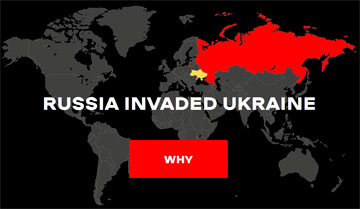Multiple vulnerabilities in Microsoft Windows Telephony Service
| Risk | High |
| Patch available | YES |
| Number of vulnerabilities | 5 |
| CVE-ID | CVE-2025-21200 CVE-2025-21407 CVE-2025-21371 CVE-2025-21190 CVE-2025-21406 |
| CWE-ID | CWE-122 CWE-416 |
| Exploitation vector | Network |
| Public exploit | N/A |
| Vulnerable software |
Windows Operating systems & Components / Operating system Windows Server Operating systems & Components / Operating system |
| Vendor | Microsoft |
Security Bulletin
This security bulletin contains information about 5 vulnerabilities.
1) Heap-based buffer overflow
EUVDB-ID: #VU103785
Risk: High
CVSSv4.0: 6.1 [CVSS:4.0/AV:N/AC:L/AT:N/PR:N/UI:A/VC:H/VI:H/VA:H/SC:N/SI:N/SA:N/E:U/U:Amber]
CVE-ID: CVE-2025-21200
CWE-ID:
CWE-122 - Heap-based Buffer Overflow
Exploit availability: No
DescriptionThe vulnerability allows a remote attacker to execute arbitrary code on the target system.
The vulnerability exists due to a boundary error in Windows Telephony Service. A remote attacker can trick a victim to connect to a malicious server, trigger a heap-based buffer overflow and execute arbitrary code on the target system.
Successful exploitation of this vulnerability may result in complete compromise of vulnerable system.
MitigationInstall updates from vendor's website.
Vulnerable software versionsWindows: 10 21H2 10.0.19041.3920 - 11 24H2 10.0.26100.2894
Windows Server: 2008 R2 6.1.7601.27067 - 2025 10.0.26100.2894
CPE2.3- cpe:2.3:o:microsoft:windows:10:21H2_10.0.19041.3920:*:*:*:*:*:*
- cpe:2.3:o:microsoft:windows:10_21H2:10.0.19043.4529:*:*:*:*:*:*
- cpe:2.3:o:microsoft:windows:10_21H2:10.0.19044.1147:*:*:*:*:*:*
- cpe:2.3:o:microsoft:windows:10_21H2:10.0.19044.1149:*:*:*:*:*:*
- cpe:2.3:o:microsoft:windows:10_21H2:10.0.19044.1151:*:*:*:*:*:*
- cpe:2.3:o:microsoft:windows:10_21H2:10.0.19044.1165:*:*:*:*:*:*
- cpe:2.3:o:microsoft:windows:10_21H2:10.0.19044.1200:*:*:*:*:*:*
- cpe:2.3:o:microsoft:windows:*:*:*:*:*:*:*:*
- cpe:2.3:o:microsoft:windows:10_21H2:10.0.19044.1263:*:*:*:*:*:*
- cpe:2.3:o:microsoft:windows_server:2008_R2:6.1.7601.27067:*:*:*:*:*:*
https://portal.msrc.microsoft.com/en-US/security-guidance/advisory/CVE-2025-21200
Q & A
Can this vulnerability be exploited remotely?
Yes. This vulnerability can be exploited by a remote non-authenticated attacker via the Internet.
Is there known malware, which exploits this vulnerability?
No. We are not aware of malware exploiting this vulnerability.
2) Heap-based buffer overflow
EUVDB-ID: #VU103789
Risk: High
CVSSv4.0: 6.1 [CVSS:4.0/AV:N/AC:L/AT:N/PR:N/UI:A/VC:H/VI:H/VA:H/SC:N/SI:N/SA:N/E:U/U:Amber]
CVE-ID: CVE-2025-21407
CWE-ID:
CWE-122 - Heap-based Buffer Overflow
Exploit availability: No
DescriptionThe vulnerability allows a remote attacker to execute arbitrary code on the target system.
The vulnerability exists due to a boundary error in Windows Telephony Service. A remote attacker can trick a victim to connect to a malicious server, trigger a heap-based buffer overflow and execute arbitrary code on the target system.
Successful exploitation of this vulnerability may result in complete compromise of vulnerable system.
MitigationInstall updates from vendor's website.
Vulnerable software versionsWindows: 10 21H2 10.0.19041.3920 - 11 24H2 10.0.26100.2894
Windows Server: 2008 R2 6.1.7601.27067 - 2025 10.0.26100.2894
CPE2.3- cpe:2.3:o:microsoft:windows:10:21H2_10.0.19041.3920:*:*:*:*:*:*
- cpe:2.3:o:microsoft:windows:10_21H2:10.0.19043.4529:*:*:*:*:*:*
- cpe:2.3:o:microsoft:windows:10_21H2:10.0.19044.1147:*:*:*:*:*:*
- cpe:2.3:o:microsoft:windows:10_21H2:10.0.19044.1149:*:*:*:*:*:*
- cpe:2.3:o:microsoft:windows:10_21H2:10.0.19044.1151:*:*:*:*:*:*
- cpe:2.3:o:microsoft:windows:10_21H2:10.0.19044.1165:*:*:*:*:*:*
- cpe:2.3:o:microsoft:windows:10_21H2:10.0.19044.1200:*:*:*:*:*:*
- cpe:2.3:o:microsoft:windows:10_21H2:10.0.19044.1263:*:*:*:*:*:*
- cpe:2.3:o:microsoft:windows:10_21H2:10.0.19044.1266:*:*:*:*:*:*
- cpe:2.3:o:microsoft:windows_server:2008_R2:6.1.7601.27067:*:*:*:*:*:*
- cpe:2.3:o:microsoft:windows_server:2008_R2:6.1.7601.27117:*:*:*:*:*:*
https://portal.msrc.microsoft.com/en-US/security-guidance/advisory/CVE-2025-21407
Q & A
Can this vulnerability be exploited remotely?
Yes. This vulnerability can be exploited by a remote non-authenticated attacker via the Internet.
Is there known malware, which exploits this vulnerability?
No. We are not aware of malware exploiting this vulnerability.
3) Heap-based buffer overflow
EUVDB-ID: #VU103788
Risk: High
CVSSv4.0: 6.1 [CVSS:4.0/AV:N/AC:L/AT:N/PR:N/UI:A/VC:H/VI:H/VA:H/SC:N/SI:N/SA:N/E:U/U:Amber]
CVE-ID: CVE-2025-21371
CWE-ID:
CWE-122 - Heap-based Buffer Overflow
Exploit availability: No
DescriptionThe vulnerability allows a remote attacker to execute arbitrary code on the target system.
The vulnerability exists due to a boundary error in Windows Telephony Service. A remote attacker can trick a victim to connect to a malicious server, trigger a heap-based buffer overflow and execute arbitrary code on the target system.
Successful exploitation of this vulnerability may result in complete compromise of vulnerable system.
MitigationInstall updates from vendor's website.
Vulnerable software versionsWindows: 10 21H2 10.0.19041.3920 - 11 24H2 10.0.26100.2894
Windows Server: 2008 R2 6.1.7601.27067 - 2025 10.0.26100.2894
CPE2.3- cpe:2.3:o:microsoft:windows:10:21H2_10.0.19041.3920:*:*:*:*:*:*
- cpe:2.3:o:microsoft:windows:10_21H2:10.0.19043.4529:*:*:*:*:*:*
- cpe:2.3:o:microsoft:windows:10_21H2:10.0.19044.1147:*:*:*:*:*:*
- cpe:2.3:o:microsoft:windows:10_21H2:10.0.19044.1149:*:*:*:*:*:*
- cpe:2.3:o:microsoft:windows:10_21H2:10.0.19044.1151:*:*:*:*:*:*
- cpe:2.3:o:microsoft:windows:10_21H2:10.0.19044.1165:*:*:*:*:*:*
- cpe:2.3:o:microsoft:windows:10_21H2:10.0.19044.1200:*:*:*:*:*:*
- cpe:2.3:o:microsoft:windows:10_21H2:10.0.19044.1263:*:*:*:*:*:*
- cpe:2.3:o:microsoft:windows:10_21H2:10.0.19044.1266:*:*:*:*:*:*
- cpe:2.3:o:microsoft:windows:10_21H2:10.0.19044.1288:*:*:*:*:*:*
- cpe:2.3:o:microsoft:windows_server:2008_R2:6.1.7601.27067:*:*:*:*:*:*
- cpe:2.3:o:microsoft:windows_server:2008_R2:6.1.7601.27117:*:*:*:*:*:*
- cpe:2.3:o:microsoft:windows_server:2008_SP2:*:*:*:*:*:*:*
https://portal.msrc.microsoft.com/en-US/security-guidance/advisory/CVE-2025-21371
Q & A
Can this vulnerability be exploited remotely?
Yes. This vulnerability can be exploited by a remote non-authenticated attacker via the Internet.
Is there known malware, which exploits this vulnerability?
No. We are not aware of malware exploiting this vulnerability.
4) Heap-based buffer overflow
EUVDB-ID: #VU103787
Risk: High
CVSSv4.0: 6.1 [CVSS:4.0/AV:N/AC:L/AT:N/PR:N/UI:A/VC:H/VI:H/VA:H/SC:N/SI:N/SA:N/E:U/U:Amber]
CVE-ID: CVE-2025-21190
CWE-ID:
CWE-122 - Heap-based Buffer Overflow
Exploit availability: No
DescriptionThe vulnerability allows a remote attacker to execute arbitrary code on the target system.
The vulnerability exists due to a boundary error in Windows Telephony Service. A remote attacker can trick a victim to connect to a malicious server, trigger a heap-based buffer overflow and execute arbitrary code on the target system.
Successful exploitation of this vulnerability may result in complete compromise of vulnerable system.
MitigationInstall updates from vendor's website.
Vulnerable software versionsWindows: 10 21H2 10.0.19041.3920 - 11 24H2 10.0.26100.2894
Windows Server: 2008 R2 6.1.7601.27067 - 2025 10.0.26100.2894
CPE2.3- cpe:2.3:o:microsoft:windows:10:21H2_10.0.19041.3920:*:*:*:*:*:*
- cpe:2.3:o:microsoft:windows:10_21H2:10.0.19043.4529:*:*:*:*:*:*
- cpe:2.3:o:microsoft:windows:10_21H2:10.0.19044.1147:*:*:*:*:*:*
- cpe:2.3:o:microsoft:windows:10_21H2:10.0.19044.1149:*:*:*:*:*:*
- cpe:2.3:o:microsoft:windows:10_21H2:10.0.19044.1151:*:*:*:*:*:*
- cpe:2.3:o:microsoft:windows:10_21H2:10.0.19044.1165:*:*:*:*:*:*
- cpe:2.3:o:microsoft:windows:10_21H2:10.0.19044.1200:*:*:*:*:*:*
- cpe:2.3:o:microsoft:windows:10_21H2:10.0.19044.1263:*:*:*:*:*:*
- cpe:2.3:o:microsoft:windows:10_21H2:10.0.19044.1266:*:*:*:*:*:*
- cpe:2.3:o:microsoft:windows:10_21H2:10.0.19044.1288:*:*:*:*:*:*
- cpe:2.3:o:microsoft:windows:10_21H2:10.0.19044.1319:*:*:*:*:*:*
- cpe:2.3:o:microsoft:windows_server:2008_R2:6.1.7601.27067:*:*:*:*:*:*
- cpe:2.3:o:microsoft:windows_server:2008_R2:6.1.7601.27117:*:*:*:*:*:*
- cpe:2.3:o:microsoft:windows_server:2008_SP2:*:*:*:*:*:*:*
- cpe:2.3:o:microsoft:windows_server:2008_R2_SP1:*:*:*:*:*:*:*
https://portal.msrc.microsoft.com/en-US/security-guidance/advisory/CVE-2025-21190
Q & A
Can this vulnerability be exploited remotely?
Yes. This vulnerability can be exploited by a remote non-authenticated attacker via the Internet.
Is there known malware, which exploits this vulnerability?
No. We are not aware of malware exploiting this vulnerability.
5) Use-after-free
EUVDB-ID: #VU103786
Risk: High
CVSSv4.0: 6.1 [CVSS:4.0/AV:N/AC:L/AT:N/PR:N/UI:A/VC:H/VI:H/VA:H/SC:N/SI:N/SA:N/E:U/U:Amber]
CVE-ID: CVE-2025-21406
CWE-ID:
CWE-416 - Use After Free
Exploit availability: No
DescriptionThe vulnerability allows a remote attacker to compromise vulnerable system.
The vulnerability exists due to a use-after-free error in Windows Telephony Service. A remote attacker can trick a victim to connect to a malicious server and execute arbitrary code on the target system.
MitigationInstall updates from vendor's website.
Vulnerable software versionsWindows: 10 21H2 10.0.19041.3920 - 11 24H2 10.0.26100.2894
Windows Server: 2008 R2 6.1.7601.27067 - 2025 10.0.26100.2894
CPE2.3- cpe:2.3:o:microsoft:windows:10:21H2_10.0.19041.3920:*:*:*:*:*:*
- cpe:2.3:o:microsoft:windows:10_21H2:10.0.19043.4529:*:*:*:*:*:*
- cpe:2.3:o:microsoft:windows:10_21H2:10.0.19044.1147:*:*:*:*:*:*
- cpe:2.3:o:microsoft:windows:10_21H2:10.0.19044.1149:*:*:*:*:*:*
- cpe:2.3:o:microsoft:windows:10_21H2:10.0.19044.1151:*:*:*:*:*:*
- cpe:2.3:o:microsoft:windows:10_21H2:10.0.19044.1165:*:*:*:*:*:*
- cpe:2.3:o:microsoft:windows:10_21H2:10.0.19044.1200:*:*:*:*:*:*
- cpe:2.3:o:microsoft:windows:10_21H2:10.0.19044.1263:*:*:*:*:*:*
- cpe:2.3:o:microsoft:windows:10_21H2:10.0.19044.1266:*:*:*:*:*:*
- cpe:2.3:o:microsoft:windows:10_21H2:10.0.19044.1288:*:*:*:*:*:*
- cpe:2.3:o:microsoft:windows:10_21H2:10.0.19044.1319:*:*:*:*:*:*
- cpe:2.3:o:microsoft:windows:10_21H2:10.0.19044.1320:*:*:*:*:*:*
- cpe:2.3:o:microsoft:windows_server:2008_R2:6.1.7601.27067:*:*:*:*:*:*
- cpe:2.3:o:microsoft:windows_server:2008_R2:6.1.7601.27117:*:*:*:*:*:*
- cpe:2.3:o:microsoft:windows_server:2008_SP2:*:*:*:*:*:*:*
- cpe:2.3:o:microsoft:windows_server:2008_R2_SP1:*:*:*:*:*:*:*
- cpe:2.3:o:microsoft:windows_server:2008_R2:6.1.7601.27017:*:*:*:*:*:*
https://portal.msrc.microsoft.com/en-US/security-guidance/advisory/CVE-2025-21406
Q & A
Can this vulnerability be exploited remotely?
Yes. This vulnerability can be exploited by a remote non-authenticated attacker via the Internet.
Is there known malware, which exploits this vulnerability?
No. We are not aware of malware exploiting this vulnerability.
